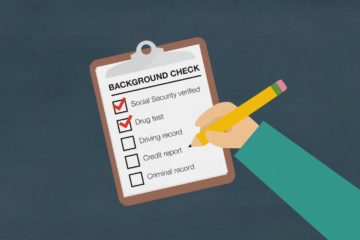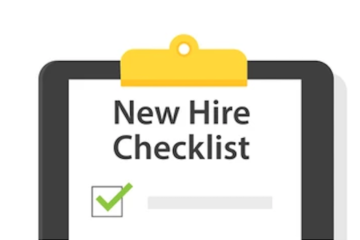No matter how many job descriptions you write, they never seem to get any easier, especially if you are writing them for roles you know little about. We’re here to help. For starters, let’s discuss the importance of job descriptions, and then we’ll tackle how to write them.
Job Title
A job description summarizes the essential responsibilities, activities, qualifications, and skills for a role.
Job titles are the first introduction candidates have to your job, so they need to be engaging.
Make your job titles specific. Targeted job titles are more effective than generic ones, so be precise by including key phrases that accurately describe the role.
Stick to standard experience levels like “Senior” rather than “VI” or other terms people are less likely to look for.
It is important to stray away from vague and particular job titles, instead create a working title that appropriately describes both the level of responsibility and role of the job.
The Job Title is a brief description (1-4 words) of the job that reflects the job’s content, purpose, and scope and is consistent with other job titles of similar roles.
When thinking about writing an attractive job title, the first thing to consider is what your ideal candidate finds attractive.
When deciding how to write a job title, include the keywords you need for your job ad to be seen in search results.
Candidates are attracted to their specializations, so be sure to be specific with job titles. Along with the job title, include a detail about the job.
The working title for a job should be based upon the primary function or role of the job.
Job Summary
- Open with a strong, attention-grabbing summary. Your summary should provide an overview of your company and expectations for the position.
- Include an exact job location. Provide an exact job location to optimize your job posting, which appears higher in job search results.
- Please write a brief three to a five-sentence summary about what the candidate will do in their role, which they’ll work with, and any general qualities your team is looking for in the individual.
Job Duties & Responsibilities
The Job Duties section is the foundation of the Job Description. It conveys the complexity, scope, and level of responsibility of a job. Due to the significance of this section, it is essential to accurately, concisely, and completely describe the duties and responsibilities of a job.
- This section contains a description of the duties and responsibilities assigned to the job; also referred to as the essential functions.
- Outline the core responsibilities of the position. Make sure your list of responsibilities is detailed but concise.
- Emphasize the duties that may be unique to your organization.
- Highlight the day-to-day activities of the position. This will help candidates understand the work environment and the activities they will be exposed to on a daily basis.
- Specify how the position fits into the organization. Indicate who the job reports to and how the person will function within your organization, helping candidates see the bigger picture and understand how the role impacts the business.
- Write in complete sentences. Be thorough. Candidates will be better prepared for the interview and role if they know what exactly is expected of them.
- Don’t be excessive. You don’t need to include transporting a three pound laptop to and from meetings in the description. Candidates will become annoyed and stop reading.
- Include explanatory phrases which tell why, how, where or how often the tasks and duties are performed.
- Focus on outcome of tasks.
- Reference areas of decision-making, where one will influence or impact.
- Identify areas of direct or indirect accountabilities.
- Describe the level and type of budgetary or financial responsibilities.
- List job duties that reflect the position requirements and ensure they are not based upon the capabilities of any one individual.
- If applicable, also address the type of supervisory responsibility that is expected from this role.
- Detail the extent of the job’s authority to hire, discipline, terminate, assign work, train, and evaluate performance of subordinates.
- Manages others through subordinate supervisors.
- The job duties should be listed in accordance to their importance and/or frequency which they are performed.
Key Accountabilties
- The main areas of responsibility within a job, or “buckets of work.” A job description usually contains three to five Key Accountabilities.
- Sentences that provide additional information about the tasks associated with the Key Accountability.
- When the Job Duties are well written and organized, they can accurately convey the complexity, scope, and level of responsibility of a job.
- Think of the job in terms of its Key Accountabilities, or main responsibilities/functions.
- After establishing the Key Accountabilities, generate specific job duties associated with each. These are the individual tasks or duties that correspond to the Key Accountability.
Duty Statements
- Begin Duty Statement with an action verb.
- Limit the listing of Duty Statements and Key Accountabilities to what is required to perform the job.
- Do not include duties that are no longer performed or those that may be required in the future.
- Write the duties in terms of what the position requires, not based upon the capabilities of any individual.
- Determine an accurate percentage of time the incumbent should spend on that particular Key Accountability over the course of a year.
- You want to go beyond a simple title and spell out the specific, day-to-day responsibilities of the role
- Make sure you specify whether it’s entry-level, mid-level, or senior-level, and then include a list of key duties and tasks
- You might also want to include certain expectations, such as travel requirements, physical activity, or public speaking.
- Help candidates visualize a typical day at work. Break responsibilities into short, clear job duties.
Qualifications & Skills
Include a list of hard and soft skills. Of course, the job description should specify education, previous job experience, certifications, and technical skills required for the role.
Keep your list concise. While you may be tempted to list out every requirement you envision for your ideal hire, including too many qualifications and skills could dissuade potential candidates.
Nice-to-Have Skills
If any other qualities are nice to have, include those here. Please don’t feel like you have to include this section, but it may help candidates know what to include in the application or interview to stand out.
Required Qualifications
This section lists the required job knowledge (such as education, experience, knowledge, skills, and abilities) required to do the job. This section focuses on the “minimum” level of qualifications for an individual to be productive and successful in this role.
In stating required knowledge, including the level or depth of knowledge needed for entry into the position. The following definitions should be helpful:
Working knowledge: sufficient familiarity with the subject to know basic principles and terminology and to understand and solve simple problems.
General knowledge: sufficient knowledge of a field to perform most work in everyday situations. The position calls for comprehension of standard situations and includes knowledge of most of the significant aspects of the subject.
Thorough knowledge: advanced knowledge of the subject matter. The work calls for sufficient comprehension of the subject area to solve unusual as well as common work problems, to be able to advise on technical issues, and to serve as a resource on the subject for others in the organization.
Comprehensive knowledge: requires complete mastery and understanding of the subject. This term should be used sparingly and only for unusually exacting or responsible positions required to originate hypotheses, concepts, or approaches.
The requirements and responsibilities section may seem like a boilerplate in many job descriptions, but it isn’t a great job description if that’s the case.
Don’t forget to list the “soft” skills that would benefit the role, such as working well under tight deadlines or delegating tasks.
Salary & Benefits
Include a salary range. Quality candidates look for opportunities that meet their salary needs.
List out your top perks and benefits. What’s in it for the candidate?
Most job seekers (83%) agree that a company’s benefits and perks significantly impact their decision to accept a job offer there.
Encourage more people to apply by sharing the attractive rewards and benefits you offer your employees, such as:
- Unlimited PTO
- Flexible hours
- Medical, dental, and vision coverage
- Office snacks
- Tuition reimbursement”
- Candidates need compelling reasons to leave their current workplaces or choose your job over others. Describe benefits and perks that come with the job
Working Conditions
People want to know what to expect in their future work environment. Are there any physical requirements for the role? What is the expected dress code?
Identify the working conditions and physical demands related to the essential job duties and responsibilities to comply with the Americans with Disabilities Act.
Environment, such as the office or outdoors.
Exposures encountered, such as hazardous materials, loud noise, or extreme heat/cold.
Essential physical requirements, such as climbing, standing, stooping, or typing.
Physical effort/lifting, such as sedentary – up to 10 pounds; light – up to 20 pounds; medium – up to 50 pounds; heavy – over 50 pounds.
Indicate if required to work weekends, nights, or be on-call as a regular part of the job
Travel requirements.
Emergency staff designations.
Experience & Professional Background
Identify the minimum number of full-time experience required in terms of years and the type of work experience an employee needs to be qualified for the job. Should internships, undergraduate work experience, and graduate assistantships be accepted levels of experience, this will need to be expressly stated.
When screening candidates, it’s essential to indicate familiarity with a specific industry, knowledge of the role, professional certification, and educational background.
Sometimes the right person will need a work visa, relocation from another geographic area, or additional training. Decide ahead of time how willing you are to make certain concessions or time investments.
Performance Standards
The Performance Standards section:
- Conveys the expectations of the job.
- Depicts the knowledge, skills, and abilities necessary to be successful in the job.
- Provides a basis for measuring performance.
This section is typically completed by either the supervisor, hiring manager, or designated administrator in the department. There is a Performance Standards section associated with each Key Accountability which provides information about the performance expectations of that particular area of responsibility.
Culture & Attitude
The right skills and experience are a good start, but to retain new hires and ultimately get the most out of them, they must also be an excellent cultural fit.
Your job ad is your chance to offer candidates a glimpse of your company culture. Consider including links to testimonials from your employees or photos of team activities.
How To Write An Effective Job Description
An adequate job description will provide enough detail for candidates to determine if they’re qualified for the position.
The job description contains sufficient information to describe primary responsibilities and essential functions as they exist today.
Editing your job description is one of the most critical job description best practices on your to-do list.
List job requirements in a straightforward yet positive tone, even if you want to eliminate unqualified candidates.
If you’re interested in writing a good job description, you will edit it thoroughly, and you won’t shy away from making changes that should be made. Evaluate each section of your job description individually and evaluate how each section fits your job description’s other sections.
Have several people read your job description who have some of the skills you are asking for. These people will be able to tell you if your job description passes “the credibility test,” which is essential for attracting top candidates.
Try reading your job description out loud. This is the best way to test how well your job description “flows” from one piece of info to another.
Don’t be afraid to make changes. The editing stage is your last chance to change out things that aren’t working for your job description, so use this opportunity to re-shape parts of your job description that are awkward, vague, or just uninteresting.
Editing can be a painstaking process, so be patient and persistent as you edit, and you will get better results (and avoid pulling your hair out).
Make sure you implement the following advice:
- Base the job description on the department’s needs.
- Refer to job titles rather than incumbents.
- Write an accurate, concise, and complete job description.
- The more specific you can be, the better.
- Use complete sentences.
- Keep sentence structure as simple as possible.
- Be precise. This is critical for accurate job evaluation and analysis.
- Use a logical sequence in describing duties and responsibilities.
- Be consistent when using terms like “may” and “occasionally.
- Be direct and personal so that your top candidate thinks.
- Paint a vivid picture of the nitty-gritty, and you’ll help candidates self-select, saving time for all.
- Bulleted lists are easier to read than narrative-style paragraphs.
- Well-structured sections help separate duties from requirements and must-have from nice-to-have skills.
- Use standard job description headings such as “Skill requirements” and “Job Qualifications.”
- Use friendly words and expressions like “You’re good at”.
- Create gender-neutral job descriptions by identifying masculine and feminine words.


